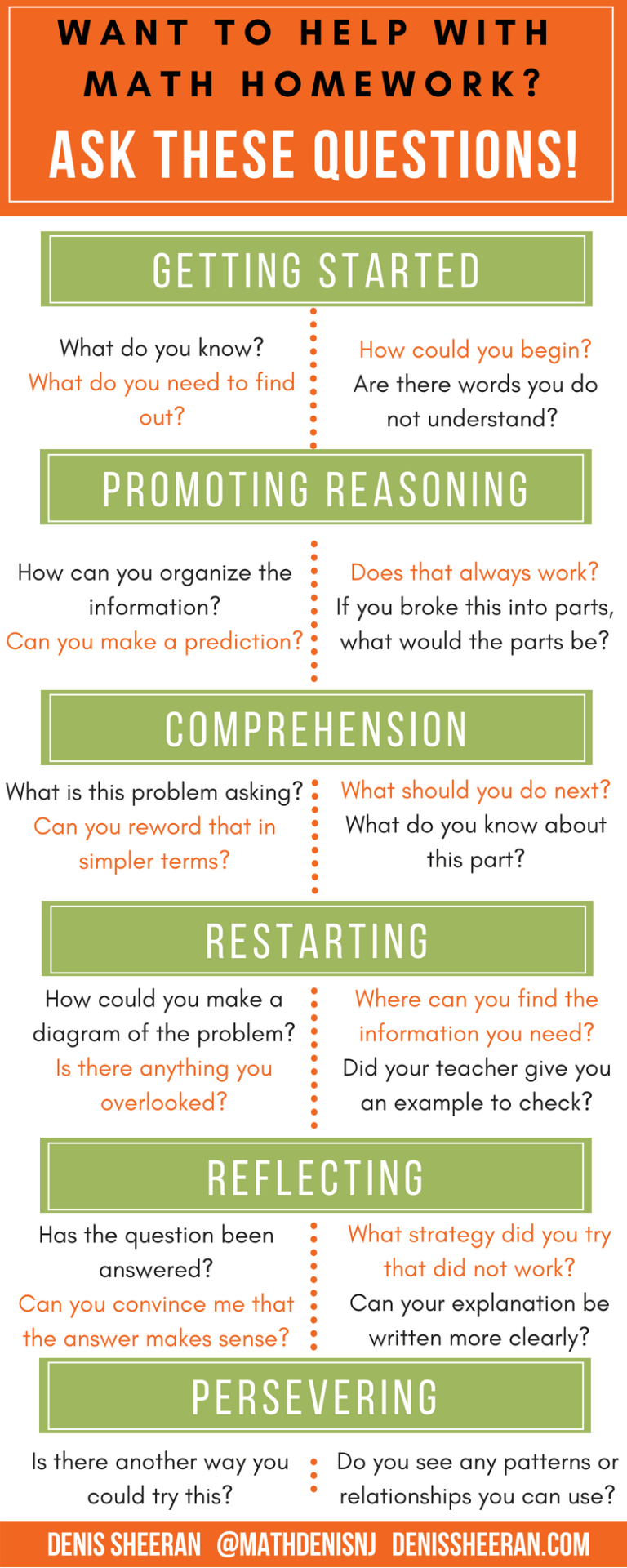Helping with homework
Learn about the context that homework is set in and how to help with homework in a way that will maximise your child’s learning
Home » Numeracy at home » Helping with homework
Helping with homework
Denis Sheeran, an online mathematics educator, suggested “Questioning is at the heart of learning mathematics, not answering”. Sheeran provides good advice about helping with homework on his site.
Read through the questions for ways to get started.
It is likely that your child’s school will have a homework policy and set homework accordingly. The Victorian Department of Education and Training (DET) has guidelines for schools on homework policy. It is important that schools set homework in accordance with the policy.
In addition, DET also provides lots of useful guidance on homework for parents. Parents ask questions about the child’s thinking and working, rather than telling them how they should work out the answers.
Many schools have ‘Family Maths’ nights or ‘Maths Information’ nights. It would be beneficial for families to attend these nights. Find out what supports your child’s school has in place for families.
Become actively involved with your child’s numeracy learning. Speak with the teacher personally to have teaching approaches explained. Take notes or ask the teacher to write an explanation.
For some more advice on how to help with mathematics homework, see the video below:
Victorian Early Years Learning and Development Framework (VEYLDF)
The Victorian Early Years Learning and Development Framework (VEYLDF) guides early childhood professionals to work with families in support of their children. It provides a common language to describe young children’s learning, and common principles to guide practice. The framework identifies five learning and development outcomes for all children from birth to eight years:
- Children have a strong sense of identity (identity)
- Children are connected with and contribute to their world (community)
- Children have a strong sense of wellbeing (wellbeing)
- Children are confident and involved learners (learning)
- Children are effective communicators (communication)
The VEYLDF identifies eight Practice Principles for Learning and Development, which describe the most effective ways for early childhood professionals to work together and with children and families to facilitate learning and development.
The Victorian Early Years Learning and Development Framework enables families to work effectively with early childhood professionals. It provides:
- valuable guidance for supporting children and families in their transitions through the first eight years of a child’s life
- a shared language
- guiding principles for achieving the best outcomes for every child and
continuity of learning.
Find out more about VEYLDF and get a PDF copy of the framework to print here.
The Victorian Curriculum: Mathematics is organised by three content strands: Number and Algebra, Measurement and Geometry, and Statistics and Probability. Numeracy is included in the Victorian Curriculum as a General Capability and in the four proficiency strands. The proficiency strands are central to learning mathematics and working mathematically. The proficiency strands apply across all three number strands.
The four proficiencies are:
Understanding: ability to describe the what and how of mathematics; e.g. able to explain why 2/4 is equivalent to one half
Fluency: ability to choose appropriate procedures; e.g. able calculate percentage discounts
Problem Solving:
Reasoning:
Professor Peter Sullivan, a leading Australian mathematics educator, explains what the proficiencies mean in the video below.
You can model these proficiencies to support your child’s numeracy development by:
- recognising your own skills, capabilities and knowledge
- taking opportunities to share how you navigate different experiences
- describing your thinking, the choices you make, and your decision making
You may help develop your child’s or children’s numeracy by:
- discussing how to use previous experiences to tackle new situations, the tools, processes and methods you rely on and why
- explaining when an estimate is appropriate rather than an exact response
- being prepared to look beyond an immediate response
- exploring unexpected discoveries and learning
Some important links to The Victorian Department of Education and Training (DET) resources and initiatives are:
- the Victorian Curriculum: Mathematics
- the Victorian numeracy portal (website containing a range of resources, activities and programs, including mathematics software and support and information about the Victorian Maths Challenge)
